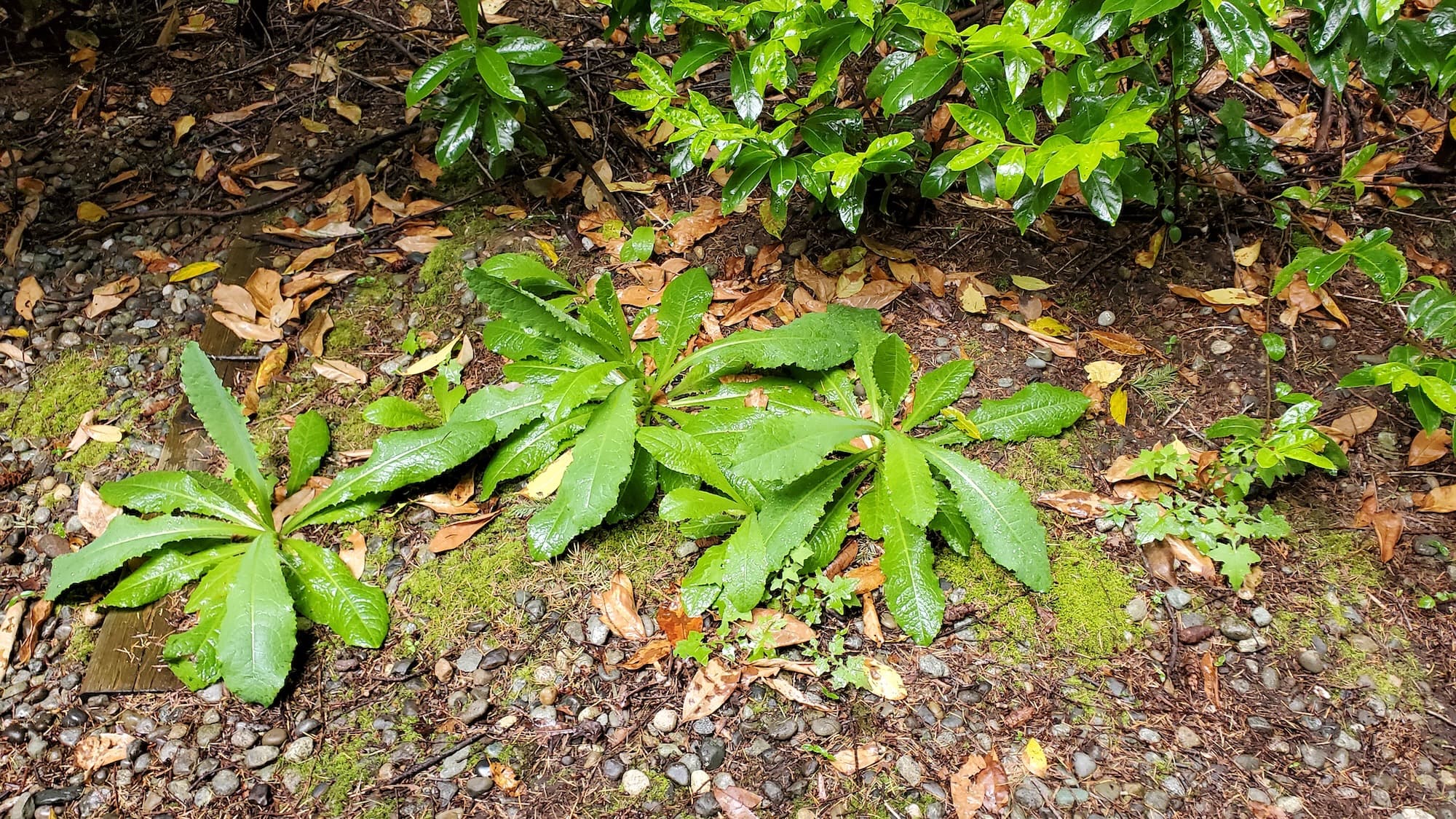West Seattle Slope Stabilization
Homeowner’s Issue
West Seattle yards sit on a mix of glacial till, compacted fill, and steeper bluff soils near Lincoln Park and Alki. Winters bring persistent Pacific Northwest rains that saturate shallow soils and flush topsoil downslope; summers are mild but can stress new plants during dry spells. Many properties have close-set evergreens and maples that cast deep shade, encouraging moss, ivy and blackberry to take hold on slopes. Compacted driveways and terraces funnel runoff; failing surface drainage and short retaining walls are common triggers for slides and erosion.
Homeowner priorities here are practical: stop the slow loss of soil, protect mature trees, and get slopes that don’t demand constant repair. HOA rules in some Admiral and Fauntleroy pockets favor tidy, plant-based solutions over bare rock faces, and Seattle’s seasonal watering norms mean irrigation needs to be realistic. We design with native, deep-rooting plants, coir/jute erosion control, and graded drainage so slopes tolerate our wet winters and the occasional summer water restriction. No herbicides are used—only mechanical, mulching, and planting strategies that build soil and reduce future maintenance.
Our Quality Service
We stabilize slopes with practical, sustainable methods: soil assessment, regrading, surface drains, compost-amended backfill, live staking, coir rolls, and native shrub/grass installations. We use hand and light mechanized tools; larger excavators only when access and permit rules allow. Typical timelines: small garden slopes—1 day; mid-sized runs—2–4 days; larger bluff projects—5+ days with staging and inspections.
Local insight guides choices: heavier clay pockets need underdrains and larger planting pockets, while sandy bluff toes require toe-anchors and erosion blankets. We respect seasonality—major installs scheduled in late spring or early fall for best plant establishment. All work is done without herbicides: we rely on manual removal, smothering with mulch/fabric where appropriate, and competitive native plantings to suppress weeds.
Benefits: safer slopes, reduced long-term upkeep, improved curb appeal, and healthier soils that absorb stormwater instead of shedding it.
What’s Included
- Onsite soil and drainage assessment.
- Grading adjustments for positive runoff.
- Installation of surface drains or French drains as needed.
- Biodegradable erosion control (coir or jute) and anchoring.
- Planting of native trees, shrubs, and deep-rooting grasses.
- Compost-amendment and mulching of all disturbed areas.
- Debris haul-away or sorting for green-bin composting.
Options / Upgrades:
- Mulch + landscape fabric combo for high-traffic toes.
- Organic, manual weed-control program (no herbicides).
- Irrigation start-up: drip for new plantings (installed only where allowed).
- Haul-away vs. staged green-bin drop-off.
Before & After / Expectations
Expect some noise, truck access, and staged soil while we work. Smaller jobs create light disturbance and are usually finished same day; mid to large jobs leave temporary berms and staging for 24–72 hours. We clean primary access areas daily and either haul debris or prep it for green-bin recycling per City of Seattle rules.
Care tips for West Seattle conditions:
- Water new plantings deeply during the first two summers, ideally in the early morning window allowed under local watering guidance.
- Watch spring and fall for blackberry/ivy resurgence—spot-pull and mulch to suppress.
- Moss indicates persistent shade/compaction—address compaction and thin canopy if moss persists.
- Check drains after heavy storms; clear debris from inlets to maintain function.
FAQs
Do you use herbicides on slopes?
No. We use only mechanical, mulching, planting and organic control methods to stabilize slopes.How long until plants hold the slope?
Deep-rooting natives begin binding soil in the first growing season; expect significant root strength by year two. Full stabilization depends on slope size and species used.Will you need to close my driveway or sidewalk?
Usually not. We plan access to minimize closures, but tight sites may require short, scheduled staging that we communicate in advance.What about permits on bluff or large retaining walls?
Larger retaining walls or work near critical slopes often need a permit. We flag permit needs during the assessment and can work with engineers if required.
Call to Action
If your West Seattle slope is slipping or you want a low-maintenance, sustainable solution, book a free estimate. We schedule quickly, give realistic timelines, and use proven native-plant and bioengineering methods—no herbicides, no shortcuts.
Email: neatandtidyseattle@gmail.com










